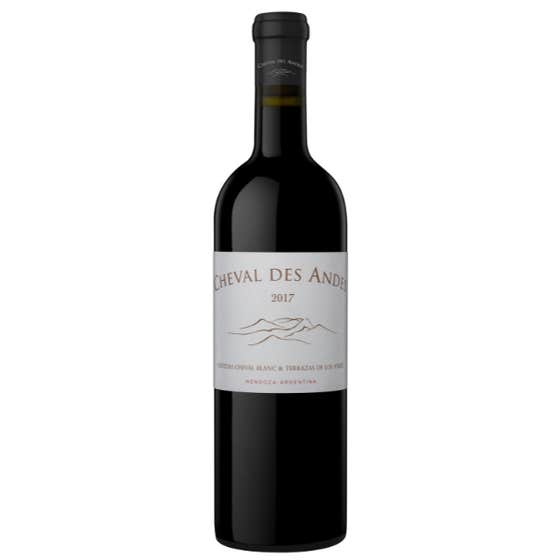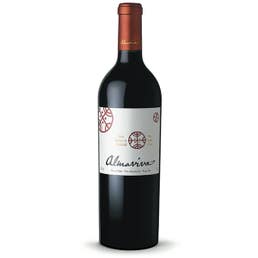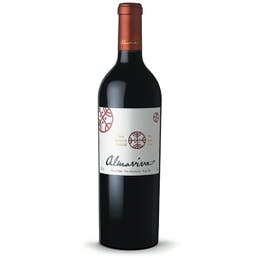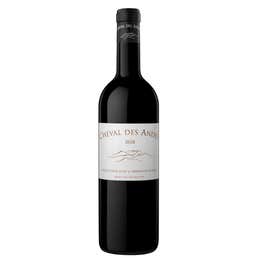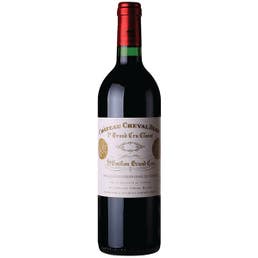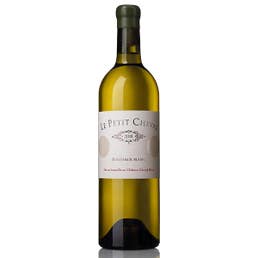Cheval des Andes 2017
• Domaine: Cheval des Andes
• Appellation: Mendoza
• Origin: Argentina
A “Grand Cru” from Argentina
Cheval des Andes is the result of a joint venture between Château Cheval Blanc (Premier Cru Classé A, Saint-Emilion) and Terrazas de Los Andes, a pioneer of cool-climate, high-altitude winemaking in Argentina.
The story of this union began in the late 1990s when Pierre Lurton, the president of Château Cheval Blanc, was in search of pristine Malbec vines. Finding these vines was a form of connecting to the origins of Bordeaux. For context, most of France’s Malbec was eradicated by the devastating phylloxera outbreak in the 1860s. Fortunately, many of these plantings were saved because of a practice called “grafting,” but the identity of this grape would be forever changed. Because of this, Pierre Lurton set his sights on Argentina, the one country home to a sea of ungrafted and unaltered Malbec vines. After discovering the Malbec vineyard Las Compuertas at the foot of the Andes Mountain range, Pierre knew he had stumbled upon something extraordinary.
Though Cheval des Andes has achieved the milestone of its 20th vintage, the estate’s history is a long one. In the 1850s, the French transported plantings of Malbec vines from Bordeaux to Argentina, and these cuttings thrived in the country’s warmer temperatures and extreme terroir. The cuttings of Malbec were spared from the French phylloxera outbreak at the turn of the century that nearly eradicated the Malbec vines in Bordeaux. The Las Compuertas vineyard was one property in the prestigious Luján de Cuyo region that would be planted with old Malbec in 1929. Seventy years later, these vines captured Pierre Lurton’s attention, inspiring him to create a wine that would uncover the origins of Bordeaux.
The name “Las Compuertas” means “The Floodgates,” which is an homage to the irrigation methods used by the Incan people who were indigenous to this region. They would typically use a snowpack to water the vines from the Andes Mountain range. Interestingly, this method drowned phylloxera pests, which may be why most old vine Malbec was spared from the devastating outbreak that affected the rest of the world. The team at Cheval des Andes has refined this practice, collecting the snowpack from the Andes Mountains in snow reservoirs and then using it to irrigate the vines at this "Grand Cru" vineyard at the base of the Andes Mountains. They ensure that each parcel is planted in perfectly compatible terroir and harvested at the optimum date to ensure freshness. The Petit Verdot is imported directly from Château Margaux prior to being added to the final blend, depending on the vintage.
Located in one of the most renowned regions of Luján de Cuyo, in the north of Mendoza, Cheval des Andes spans 50 hectares. The richness of this exceptional terroir at the foot of the Andes mountain range enables the vineyard to cultivate two grape varieties: Malbec and Cabernet Sauvignon.
Cheval des Andes wine is a blend of Malbec, Cabernet Sauvignon, and Petit Verdot, which may sometimes be added depending on the vintage. This combination captures the intensity of Argentinian terroir mixed with the rigor, savoir-faire, and elegance of a great Bordeaux. Cheval des Andes creates the Grand Cru of the Andes, distinguished by freshness, elegance, and exceptional aging potential.
The winemaking team crafts the finest possible expression of this unique terroir in a given year. Cheval des Andes wine is unique in Argentina as it reveals the freshness and elegance of the terroir through blends inspired by Cheval Blanc with cellaring potential and complexity. On the nose, they are complex, and on the palate, they reveal rich red fruit flavors that are smoothly blended with coffee and spices. The wine has a silky texture and delicious finish.
The Cheval Blanc team started a biodiversity project on the property, ensuring that local birds and bees are attracted to their vineyards. After the vines are harvested by hand, they implement the vinification process, ensuring the final blend is nothing short of perfection. Cheval des Andes favors elegance and restraint over power and bold fruit, making it a stylistically unique wine from Argentina and a leader in the region.
Tasting Notes
"In the last few years, a handful of wines from Chile and Argentina—often French owned—have been released in September through the Place de Bordeaux, the network of négociants that sell most of the Bordeaux wines and some of the leading wines from other regions. The 2017 Cheval des Andes is one such wine. 2017 saw an early harvest, but they started picking on the 6th of March and continued until the 10th of April, more or less normal dates, early but not so much. The varietal break down this vintage comes to 62% Malbec and 38% Cabernet Sauvignon, and the wine is slightly riper and higher in alcohol than 2016 (this 2017 is 14.2% alcohol). The different plots fermented separately with selected yeasts, and the élevage lasted for 15 months and was in 50/50 new and second use barrels, 90% of them French and the rest made with wood from Eastern Europe. They used 45% Bordeaux barrels, 45% 400-liter barrels and, for the first time, a 2,500-liter oak foudre. This is clearly the darkest of the trio of vintages I tasted together here—2015, 2016 and 2017—but all three have the elegant and powerful profile, the luxurious and creamy character found in the best Bordeaux wines in the last few years, wines of power with precision, concentration, energy and finesse. This seems to combine the clout of the 2015 and the freshness of the 2016 and feels something in between those two vintages. Their work in the vineyard toward the maturity of the tannins meant the challenge in 2017 was to not let the grapes ripen too fast and too early. The work is different for Cabernet Sauvignon and Malbec, to get round tannins in Cabernet and get some tension in Malbec, the contrary of the normal tendency of the varieties. 2017 has less ripeness than the 2015 but more density than the 2016. The texture is velvety, precise and harmonious. This year, they introduced a larger foudre for 10% of the wine, with the aim to reach 20%, so that volume is increasing every year. I think this is showing more precision, and in a more challenging year, they managed to keep the quality on par with 2016. They have changed the label this year, to a cleaner and more elegant label that also reflects the direction the wine is going in. 81,500 bottles produced. It was bottled in January 2019." - Luis Gutiérrez, Robert Parker's Wine Advocate (8/31/2020, Issue 250), Ratings: 97+, Drink: 2020-2034
''A clear step up, the 2017 Cheval Des Andes brings more richness and texture, while still playing in this complex, elegant, beautifully balanced style. A slightly more Malbec-dominated blend of 62% Malbec and 38% Cabernet Sauvignon (there's no Petit Verdot) aged 15 months in 50% new oak, it offers beautiful currant and cassis fruits as well as tobacco, graphite, stony minerality, and spice aromas and flavors. Medium to full-bodied and wonderfully textured, with remarkable purity and silky tannins, it's another Bordeaux lover’s Mendoza that brings beautiful fruit, purity, and precision. Of the trio of vintages I was able to taste, this is the most complete, balanced, and structured. It's a brilliant wine!'' Jeb Dunnuck, Bordeaux 2020: En Primeur (3/2/2022) Ratings: 96
"Savoury black fruits with scorched earth smoke, eucalyptus and cocoa bean, given focus and a sense of momentum by fresh acidities and a juicy finish. Malbec has the ability as does Pinot Noir to either drink early or to age for years, and you feel the elasticity and promise of the tannins in this wine. Blend at the end of ageing. Aged in 2500-litre oak casks, 70% new oak." Jane Anson, Best Pomerol 2020 Wines Tasted En Primeur (07/08/2021) Ratings: 96, Drink: 2021-2040
| LWIN | 2909015 |
|---|---|
| Stock Status | Out of Stock |
| Appellation | Mendoza |
| Vintage | 2017 |
| Brand | Château Cheval Blanc |
| Shipping Weight | 3.000000 |

